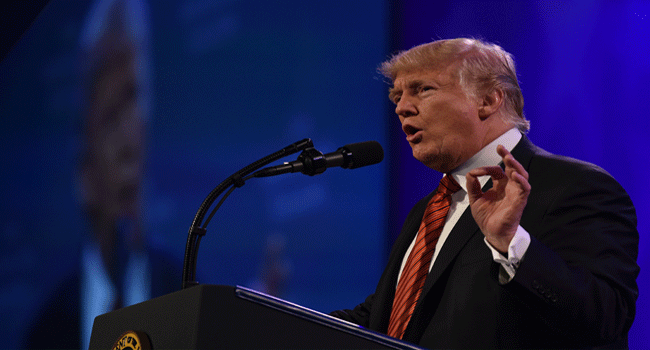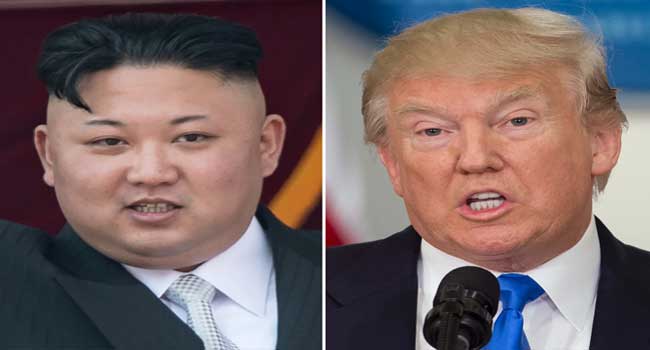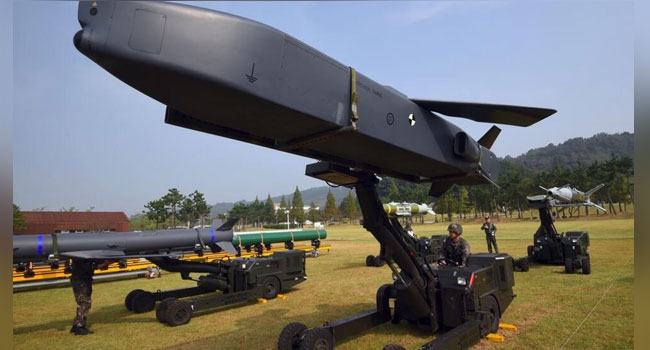
United States President Donald Trump warned “all options” are again on the table Tuesday after North Korea snubbed Washington’s bid to lure it back to talks by test firing a ballistic missile over Japan.
Trump revived his implied threat of pre-emptive US military action just days after congratulating himself that North Korea’s Kim Jong-Un appeared to be “starting to respect” him by holding off on missile firings.
Kim responded not only by resuming test launches, but by choosing a much more dangerous flight path, sending a ballistic missile high over US ally Japan, triggering consternation on the ground and in world capitals.
“Threatening and destabilising actions only increase the North Korean regime’s isolation in the region and among all nations of the world,” Trump said, in a White House statement. “All options are on the table.”
Japan and the United States called an emergency meeting of the US Security Council in New York, where Washington’s Ambassador Nikki Haley warned that “enough is enough” and that tough action must be taken against Pyongyang.
“It’s unacceptable,” Haley said. “They have violated every single UN Security Council resolution that we’ve had, and so I think something serious has to happen.”
New sanctions on North Korea could be discussed, she said.
“I think we have a lot to talk about today. So with all of our partners, what we hope is that China and Russia continue to work with us, like they have in the past on North Korea.”
The Pentagon identified the missile that was fired as an intermediate range ballistic missile (or IRBM) — a projectile with a range of between 3,000 and 5,500 kilometers (1,864–3,418 miles).
Independent experts reacting to the publicly available information said the reports were compatible with the missile having been North Korea’s single-stage, liquid-fueled Hwasong-12 — fired from a land-based mobile launcher.
North Korea has tested longer range weapons, but the IRBM in the latest test would not have the range to hit mainland US cities. It could threaten US allies Japan and South Korea and reach the US Pacific territory of Guam.
But the Pentagon said that the launch was judged not to have represented a threat, adding in a statement: “We remain prepared to defend ourselves and our allies from any attack or provocation.”
For its part, North Korea defended its right to take “tough counter-measures” in response to what it considers US aggression — despite repeated calls from Washington for it to come to the negotiating table.
– ‘No military solution’ –
The US president’s language might suggest he is rethinking any military options that might allow him to knock out North Korea’s small but growing nuclear arsenal and ever more advanced range of ballistic missiles.
But, speaking privately, officials in Washington echo the warning that Trump’s now former chief strategist Steve Bannon made in his last media interview before losing his job earlier this month: it is too late for a pre-emptive strike.
“There’s no military solution, forget it,” Bannon told the American Prospect in an August 16 interview.
“Until somebody solves the part of the equation that shows me ten million people in Seoul don’t die in the first 30 minutes from conventional weapons, I don’t know what you’re talking about, there’s no military solution here, they got us.”
The U.S. State Department wants to work with China to convince North Korea that its best hope of ending its economic and diplomatic isolation is to enter good faith talks with Washington on nuclear disarmament.
Last week, Secretary of State Rex Tillerson said that Kim appeared to have shown a “level of restraint” in not responding to the last round of UN sanctions with a missile firing — and said talks may be possible “in the near future.”
That timetable, never precise, now seems to have slipped back, even if Trump has yet to repeat his earlier apocalyptic threat to unleash “fire and fury” after Pyongyang carried out two long-range ballistic missile tests last month.
Then Pyongyang, in turn, threatened to fire missiles into waters off the U.S. Pacific island territory of Guam, to show its supposed ability to “engulf” in fire the hub of U.S. air power in Asia.
Any missile fired at Guam would have to pass over Japan, and analysts told AFP that the North Korean leader appeared to have chosen the trajectory of his latest test as a “half-way house” option to send a message without crossing a red line.
– Sirens blare in Japan –
Japan’s Prime Minister Shinzo Abe was nevertheless visibly unsettled by the launch, which he dubbed an “unprecedented, serious and grave threat.”
North Korean ambassador Han Tae-Song, addressing the UN Conference on Disarmament in Geneva, said his country had the right to react to ongoing “Ulchi Freedom Guardian” US-South Korean military exercises.
“My country has every reason to respond with tough counter-measures as an exercise of its rights to self-defense,” Han warned.
Sirens blared out and text messages were fired off across northern Japan warning people in the missile’s flight path to take cover.
Trains were delayed as passengers were urged to seek shelter inside stations.
“All lines are experiencing disruption,” said one sign on Sapporo’s metro system. “Reason: Ballistic missile launch.”
– ‘Tipping point’ –
South Korea said the latest missile was launched from Sunan near Pyongyang and flew around 2,700 kilometers at a maximum altitude of around 550 kilometers before landing in the sea.
Abe called the overflight an “outrageous act” and, after a 40-minute call with Trump, he said the allies had agreed to “further strengthen pressure against North Korea.”
But China, the North’s key ally and main trading partner, urged restraint, and said US-South Korean military drills were partly to blame for tension and warned that both sides should pull back from a “tipping point.”
AFP




